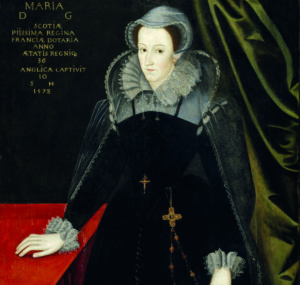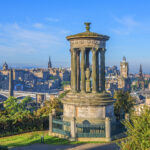MORE FROM SCOTLAND MAGAZINE
Mary, Queen of Scots: Mary’s Secret Code
Imprisoned for half her life, Mary, Queen of Scots used a series of ciphers and codes in locked letters to communicate with supporters, but did they contribute to her downfall?
Mary, Queen of Scots
Mary, Queen of Scots is one of Scotland’s most enduring historical figures. The appetite for tales of her fated life in print and on screen remains voracious. As Dr Steven Reid, Senior Lecturer in Scottish History at the University of Glasgow, puts it, “her story is consumed for its drama and tragedy”. And it’s easy to see why. Mary was a woman, no less, at the heart of religious, and therefore political, divisions between Scotland and England in the 16th century. She endured an alleged kidnapping, accusations of murder and infidelity, as well as captivity and much personal heartache, ranging from abandonment by her son to the prickly relationship she had with her cousin, Queen Elizabeth I. It really is the stuff of a delectable medieval soap opera.
Mary spent nearly half of her life under house arrest in England. During this time, she proved persistent – tirelessly campaigning for her release under the watchful eyes of her captors. Through volumes of coded letters, she was able to communicate with a network of supporters and spies on the outside.
But Elizabeth, no fool, had her own expert ring of spies and codebreakers, which ensured a continual, high-stakes game of cat and mouse played out between the two. How Mary used codes and ciphers, and how Elizabeth’s spies ensnared – arguably even entrapped – Mary and her supporters is a subject of ongoing debate and fascination.
MARY’S CLAIM TO ELIZABETH’S THRONE
Whether or not Mary’s claim to the English throne was valid depends on which side of the religious divide you sit. When Mary I of England, Henry VIII’s eldest daughter, died in 1558, his will stated that the Scottish Stuarts be excluded from any claim to the English throne. Thanks to the 1543 Third Succession Act, his second daughter, Elizabeth, was clear to succeed her sister as queen.
For many Catholics, still reeling from Henry’s seemingly heretical break from Rome, Elizabeth, the daughter of Anne Boleyn, was illegitimate. They saw Mary, Queen of Scots as the rightful heir, given that she was the granddaughter of Margaret Tudor, Henry VIII’s sister They saw Mary, Queen of Scots as
When Mary found herself in England, having been forced to abdicate and flee from Scotland, Elizabeth simply didn’t know what to do with her. Mary was a thorn in Elizabeth’s side – a galvanising figure for Catholics keen to overthrow Elizabeth, whose very existence challenged the English queen’s legitimacy.
As such, from 1568 until the year of her death in 1587, Mary was kept under lock and key at numerous residences in areas of England deemed far enough away from Scotland, London, and the coast.
These included Bolton Castle, Tutbury Castle, Sheffield Castle, Chatsworth House and Chartley Castle, among others.
Although Mary was held captive with many comforts, which included her own household staff, personal chef and summer jaunts, the “anguish and anxiety”, she felt, as described by historian Dr Susan Doran, over her endless captivity, never abated.

SECRETS, CIPHERS, AND PLOTS
Mary tried many schemes to win back her freedom, from arranging potential marriage alliances and negotiating her return to Scotland with her son, James VI, to promising to renounce her claim to the English throne, but none bore fruit, and her despair deepened.
As such, writing and receiving letters was a vital line of communication for her. As Dr Sean Cunningham, Head of Medieval Records at The National Archives, states: “She was desperate to hear state business and news from Scotland and France. Without it, her imprisonment was a torturous ordeal.” Moreover, Mary’s letter-writing enabled her to remain in contact with her supporters.
But Mary was unaware that many of her most secret letters, typically written in code, physically folded and secured through a method of ‘letterlocking’ (Mary used the complicated ‘spiral lock’) and smuggled out within barrels of beer, were being intercepted, decoded, often altered and sent on their way.
This is an extract. Read the full feature in the March/April 2022 issue of Scotland, available to buy now.
Read more:

SCOTLAND MAGAZINE
Published six times a year, every issue of Scotland showcases its stunning landscapes and natural beauty, and delves deep into Scottish history. From mysterious clans and famous Scots (both past and present), to the hidden histories of the country’s greatest castles and houses, Scotland‘s pages brim with the soul and secrets of the country.
Scotland magazine captures the spirit of this wild and wonderful nation, explores its history and heritage and recommends great places to visit, so you feel at home here, wherever you are in the world.












